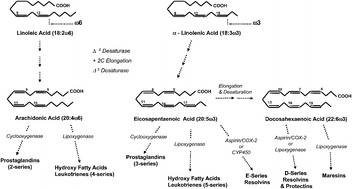Omega-3 fatty acids and cardiovascular disease: epidemiology and effects on cardiometabolic risk factors
Abstract
Clinical and epidemiological studies provide support that the polyunsaturated omega-3 fatty acids eicosapentaenoic acid and docosahexaenoic acid from fish and fish oils are cardioprotective, particularly in the setting of secondary prevention. Omega-3 fatty acids benefit multiple cardiometabolic risk factors including lipids, blood pressure, vascular reactivity and cardiac function, as well as having antithrombotic, anti-inflammatory and anti-oxidative actions. Omega-3 fatty acids do not associate with any adverse effects and do not adversely interact with prescriptive drugs such as lipid-lowering, antihypertensive or hypoglycaemic medications. Clinical studies suggest that doses up to 4 g daily when prescribed with anticoagulant or antiplatelet drugs do not associate with increased risk of major bleeding episodes. Omega-3 fatty acids have gained widespread usage by general practitioners and clinicians in clinical settings such as pregnancy and infant development, secondary prevention in coronary heart disease patients and treatment of dyslipidaemias. Health authorities currently recommend an intake of at least two oily fish meals per week for the general population which equates to approximately 500 mg per day of eicosapentaenoic acid and docosahexaenoic acid. In patients with coronary heart disease the guidelines recommend 1 g daily supplements and in hypertriglyceridaemic patients up to 4 g per day. These doses are now achievable with readily available purified encapsulated preparations of omega-3 fatty acids. However, a more practical recommendation for increasing omega-3 fatty acid intake in the general population is to incorporate fish as part of a healthy diet that includes increased consumption of fruits and vegetables, and moderation of salt intake.


 Please wait while we load your content...
Please wait while we load your content...